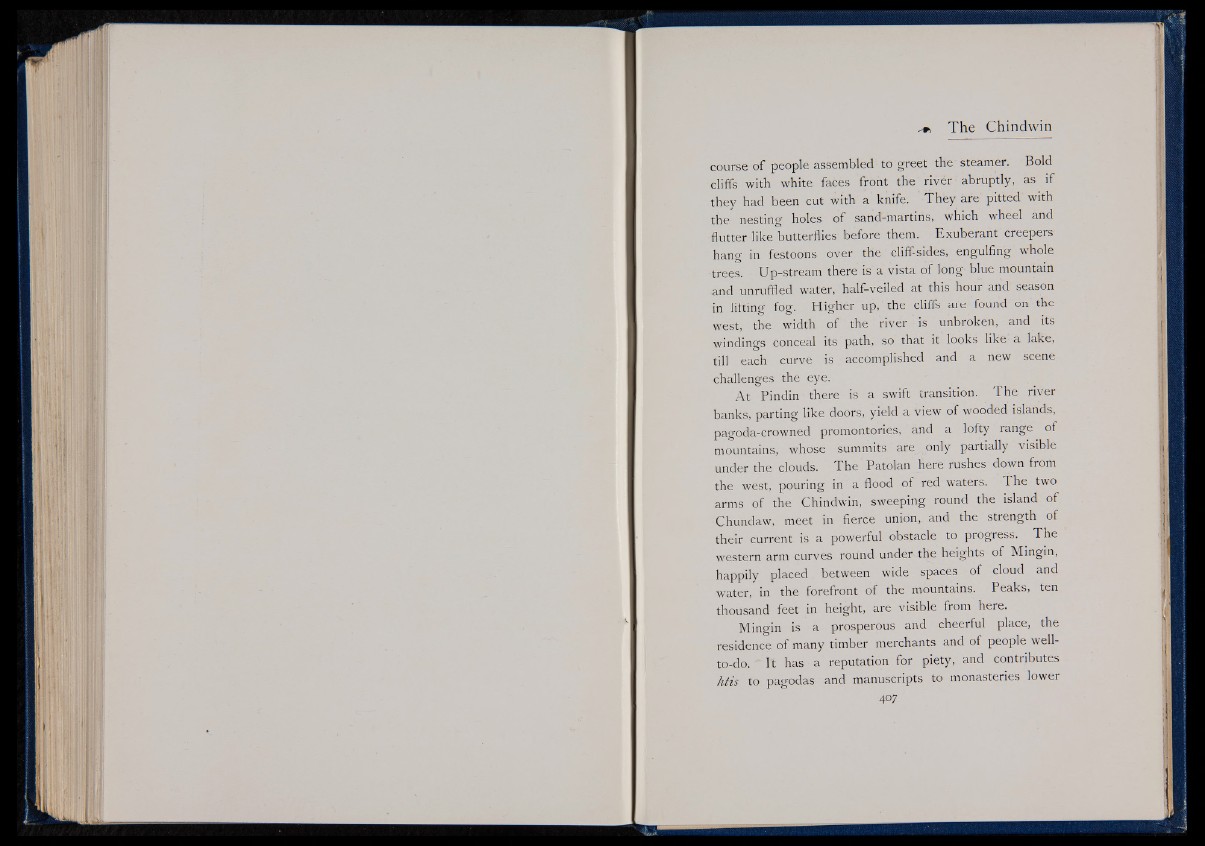
course of people assembled to greet the steamer. Bold
cliffs with white faces front the river abruptly, as if
they had been cut with a knife. They are pitted with
the nesting holes of sand-martins, which wheel and
flutter like butterflies; before them. Exuberant creepers
hang in festoons over the cliff-sides, engulfing whole
trees. Up-stream there is a vista of long blue mountain
-and unruffled water, half-veiled at this hour and season
in lifting fog. Higher up, the cliffs are found on the
west, the width of the river is unbroken, and its
windings conceal its path, so that it looks like- a lake,
till each curve is accomplished and a new scene
challenges the eye.
At Pindin there is a swift transition. The river
banks, parting like doors, yield a view of wooded islands,
pagoda-crowned promontories, and a lofty range of
mountains, whose summits are _only partially visible
under the clouds. The' Patolan Here rushes down from
the west, pouring in a flood of red waters. The two
arms of the Chindwin, sweeping round the island of
Chundaw, meet in fierce union,, and the strength of
their current is a powerful obstacle to progress. The
western arm curves round under the heights of Mingin,
happily placed between wide spaces of cloud and
water, in the forefront of the mountains. Peaks, ten
thousand feet in height, are visible from here.
Mingin is a prosperous and cheerful place, the
residence of many timber merchants and of people well-
to-do. It has a reputation for piety, and contributes
htis to pagodas and manuscripts to monasteries lower
40 7